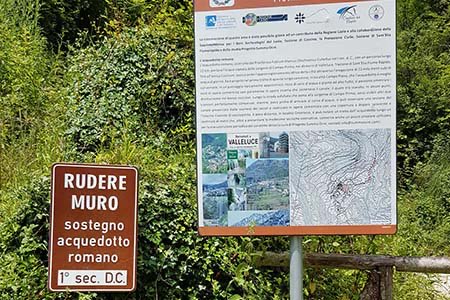
Roman Aqueduct
Ruin of a retaining wall
An ancient engineering treasure that has survived through the centuries.
The Roman Aqueduct was erected between 43 and 54 AD under the empire of Tiberio Claudio in the current location Campo area with the aim of bringing the spring water to the ancient Roman city of Casinum. It was built according to the architectural dictates of Vitruvius, using wall hangings such as the opus caementicium (cement work), formed by walls of regular stones assembled with a mortar made of lime and river sand, and the opus incertum (uncertain work), consisting of irregularly shaped stones1.
The duct, 13,68 miles long, used a pressure conduction system that allowed the water to flow constantly. Despite the numerous visual and written sources, it is still difficult today to establish, among all the re-enacted names and the various hypotheses, who commissioned and who designed and created this masterpiece of ancient engineering. Near the water spring, the ducts, the wells and a large reservoir hidden among the vegetation are still clearly visible and well preserved1.
Open Google Maps